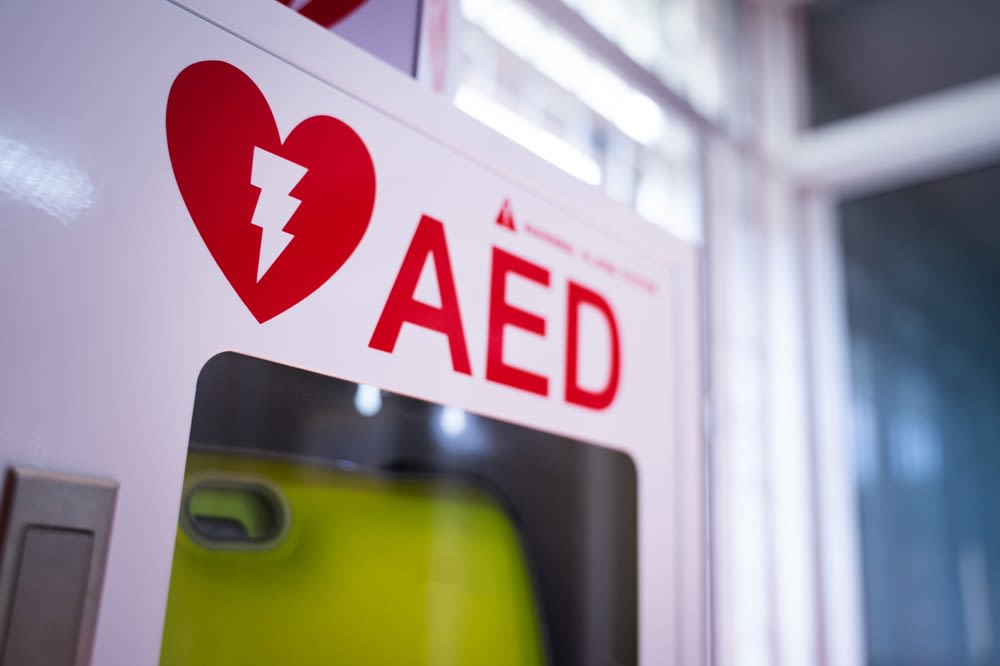
An automated external defibrillator could be the smallest medical device in your building. In a cardiac emergency, it could deliver the biggest impact. Investing in a commercial AED could help to save a life.
The American Heart Association says that more than 350,000 cardiac arrests occur outside of hospitals every year. Of the people who experience these events, less than 10% survive them.
Keep reading to find out what AEDs are and why every business should consider installing one.
What Is a Commercial AED?
AEDs are small medical devices that can perform two key tasks: analyzing heart rhythms and delivering an electric shock when needed. The American Red Cross explains that these machines are sophisticated, but they’re also designed for bystanders to use.
An AED is crucial during ventricular fibrillation, a very particular type of cardiac event. In an episode like this, the heart quivers instead of beating, and blood begins to pool. The National Heart, Lung, and Blood Institute explains that an event like this can cause death within a few minutes.
An AED delivers a shock to the heart muscle and can restore normal heartbeats. For someone experiencing ventricular fibrillation, an AED is lifesaving.
Who Must Have an AED?
A patchwork of state and federal laws refers to AED placement. Sometimes, specific types of businesses are required to install and maintain these devices appropriately.
According to the Sudden Cardiac Arrest Foundation, AED placement is often required in the following types of businesses:
Federal buildings
Schools
Health clubs
Dental offices
Pools
Assisted living facilities
Large-occupancy environments
Nursing homes
Your company’s legal counsel or medical officer can help you understand if you need to purchase and install an AED in your business. There are both federal and state guidelines that must be met.
Why Install an AED if It’s Not Required?
You’ve done your homework and recognized that you don’t need an AED to comply with the law. Why should you consider a commercial AED anyway? There are several smart reasons to do so.
Know that an AED can save lives. For every minute a person’s normal heart rate isn’t restored, the chance of survival drops by 7% to 10%. By putting an AED in your business, you’re taking a meaningful step that could protect your staff, vendors, and guests.
A step like this might not be ignored by your employees, and that matters. In a 2023 survey, 76% of respondents said they want to work for companies that have a positive impact on the world. Installing an AED could be a good first step. It shows your employees that you care about their health and well-being.
How Many AEDs Do I Need?
Once you’ve decided to participate in a commercial AED program, shift your attention to understanding how many devices you need. If you have a large space with plenty of personnel, you could need more than one AED in your workplace.
The American Heart Association explains that an AED should be applied within the first three minutes of a cardiac episode. This time frame could help you determine how many devices you need. If you can’t run to one within three minutes, you may need another.
Most people install these machines in places like elevators, cafeterias, and reception areas where plenty of people gather. You could find the spot that’s right for you and your employees. Make sure that every employee knows exactly where the AED is, so they can get to it quickly in an emergency.
How to Choose the Right AED
Organizations like the American Heart Association don’t recommend one device over another. Typically, the best version is one that you can afford and maintain. Looking for features like voice prompts, visual instructions, and more can help ensure that the tool is useful in an emergency when your staff needs it.
In some states, you’re required to get a prescription for an AED and work with a medical authority to install the device and train your staff members. If you’re in one of these locations, your medical authority can help you choose a device with the features you need. Check with your local area to ensure you understand all the required regulations.
Alsco Uniforms Health & Safety
Protect your staff and visitors when the unexpected happens. Our health and safety services include first aid kits, personal protective equipment, and more. Rent the equipment you need, and know that we’ll keep it in good working order.
At Alsco Uniforms, we have plenty of options to choose from, so you can get just what you want. We do the legwork, so you don’t have to, making the process of ensuring your business is compliant and safe so much easier. Contact us to find out more today.
References
AED: Automated External Defibrillator. (April 2018). American Heart Association.
What Is an AED? American Red Cross.
Arrhythmias. (March 2022). National Heart, Lung, and Blood Institute.
CPR and AED Laws. Sudden Cardiac Arrest Foundation.
What Is an Automated External Defibrillator? (April 2023). American Heart Association.
Despite Economic Headwinds, Employees Still Want to Work for Companies that Care. (February 2023). Forbes.
Use of Automated External Defibrillators in US Federal Buildings. (July 2014). Journal of Occupational and Environmental Medicine.
Creating and Implementing an AED Program in the Workplace. (October 2021). Occupational Health & Safety.
